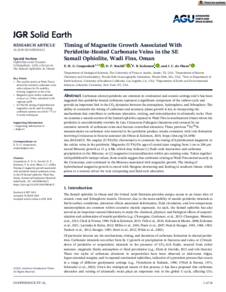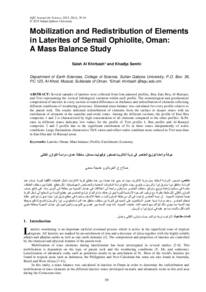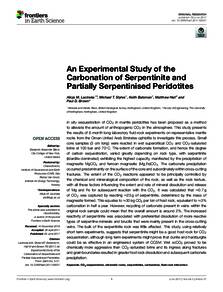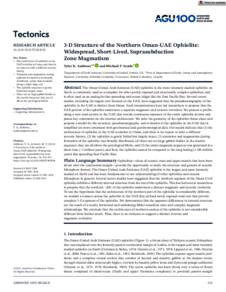Document
Timing of magnetite growth associated with peridotite-hosted carbonate veins in the SE Samail ophiolite, Wadi Fins, Oman.
Identifier
DOI: 10.1029/2019JB018632
Source
Journal of Geophysical Research: Solid Earth. v. 125, 5, e2019JB018632
Contributors
Country
United Kingdom.
City
Oxford
Publisher
Blackwell Publishing Ltd.
Gregorian
2020-05-01
Language
English
English abstract
Carbonate-altered peridotite are common in continental and oceanic settings and it has been suggested that peridotite-hosted carbonate represent a significant component of the carbon-cycle and provide an important link in the CO2 dynamics between the atmosphere, hydrosphere, and lithosphere. The ability to constrain the timing of carbonate and accessory phase growth is key to interpreting the mechanisms that contribute to carbonate alteration, veining, and mineralization in ultramafic rocks. Here we examine a mantle section of the Samail ophiolite exposed in Wadi Fins in southeastern Oman where the peridotite is unconformably overlain by Late Cretaceous-Paleogene limestone and crosscut by an extensive network of carbonate veins and fracture-controlled alteration. Three previous 87Sr/86Sr measurements on carbonate vein material in the peridotite produce results consistent with vein formation involving Cretaceous to Eocene seawater (de Obeso & Kelemen, 2018, https://doi.org/10.1098/rsta.2018.0433). We employ (U-Th)/He chronometry to constrain the timing of hydrothermal magnetite in the calcite veins in the peridotite. Magnetite (U-Th)/He ages of crystal sizes ranging from 1 cm to 200 μm record Miocene growth at 15 ± 4 Ma, which may indicate (1) fluid–rock interaction and carbonate precipitation in the Miocene, or (2) magnetite (re)crystallization within pre-existing veins. Taken together with published Sr-isotope values, these results suggest that carbonate veining at Wadi Fins started as early as the Cretaceous, and continued in the Miocene associated with magnetite growth. The timing of hydrothermal magnetite growth is coeval with Neogene shortening and faulting in southern Oman, which points to a tectonic driver for vein (re)opening and fluid-rock alteration.
ISSN
2169-9313
Category
Journal articles




